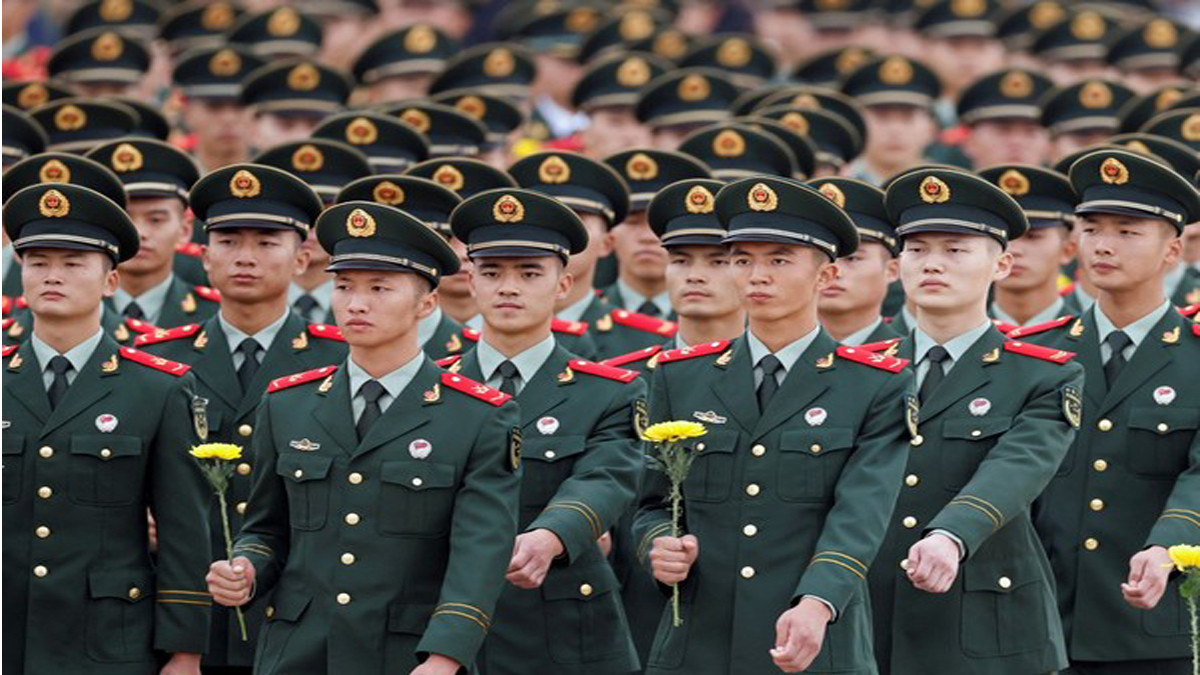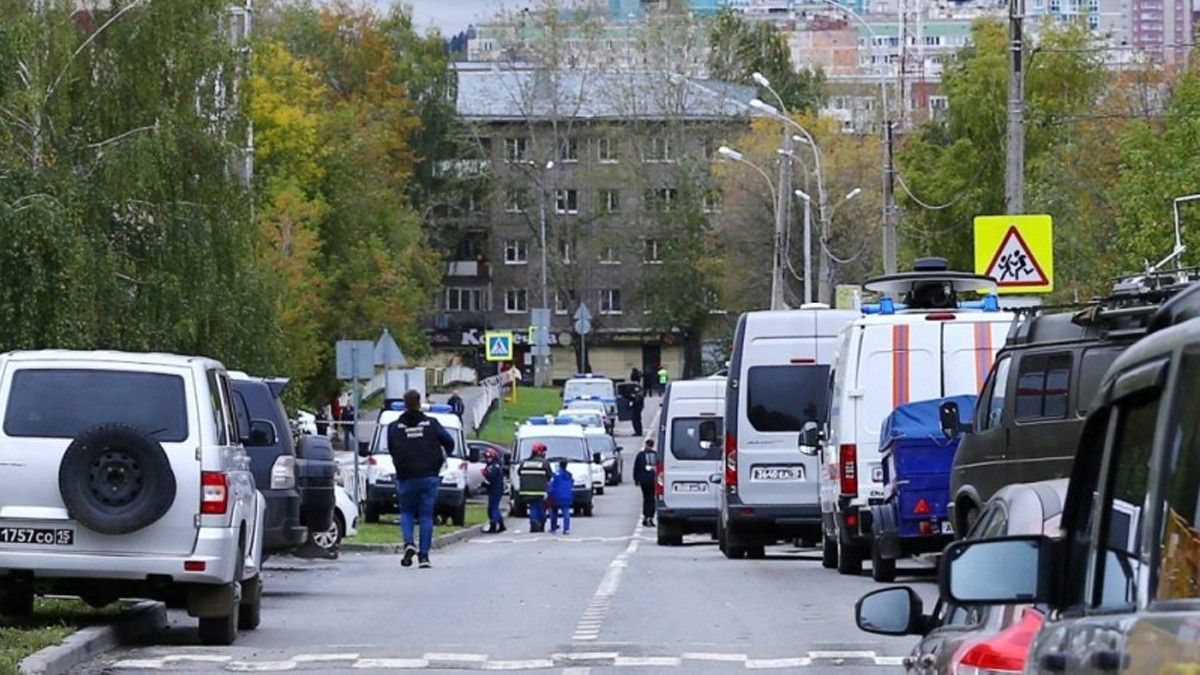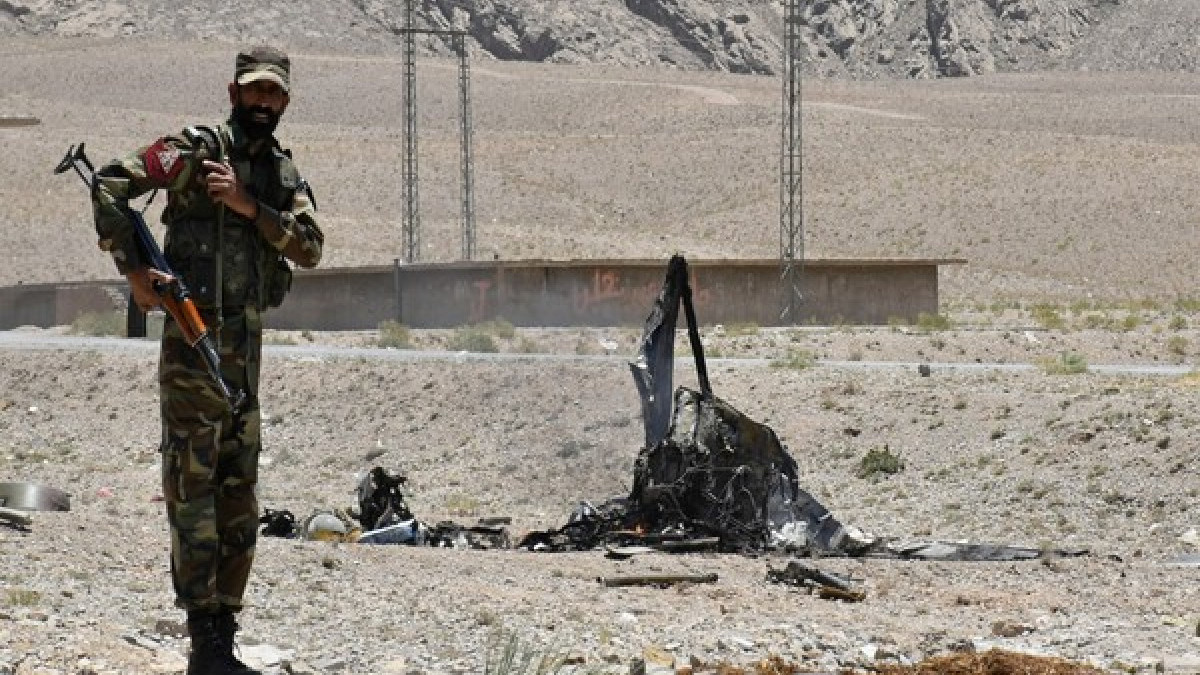 Reuters
Reuters
Hong Kong: Social media has been carrying videos of People’s Liberation Army (PLA) equipment such as rocket launchers moving across China by train, with many suggesting this is part of PLA exercises designed to display Beijing’s displeasure at the planned Taiwan visit of Speaker of the US House of Representatives Nancy Pelosi.
It is too early to say whether the PLA is concentrating troops at locations opposite Taiwan, but it does raise the interesting topic of the capability of Chinese military logistics.
In any potential PLA invasion of Taiwan, can China sustain its war efforts? Underscoring the vital importance of logistics – compared to the shiny new equipment that China likes to parade in Tiananmen Square – General Robert H. Barrow, a former US Marine Corps commandant, noted, “Amateurs talk about tactics, but professionals study logistics.”
What is logistics? If combat power were compared to a muscle, then logistics is like oxygenated blood. Without a continuous supply of oxygen, the muscle slows down and soon stops operating.
During a presentation for the Center for Strategic & International Studies (CSIS) in the USA, Colonel George Shatzer, director of strategic research and analysis at the Strategic Studies Institute of the US Army War College, offered this definition: “Logistics is the movement and support of forces, acquiring goods, storing them, transporting them, maintaining equipment and even constructing facilities.”
Over the past decade, the PLA has undergone a monumental reorganization under Chairman Xi Jinping. Logistics might not captured headlines like changes such as forming theater commands have, but it has undergone major reformation nonetheless. Previously, joint logistics for all Chinese armed services was handled by the then seven military districts, each responsible for its own fuel supply, for instance. In September 2016, the PLA created the national Joint Logistic Support Force (JLSF).
At the same CSIS event, Dr Joel Wuthnow, senior research fellow in the Center for the Study of Chinese Military Affairs within the Institute for National Strategic Studies at National Defense University, explained why the JLSF was created: “First, to further increase the cost-efficiency and management of logistics systems. So, now, you can further consolidate supply chains, you then improve standardization of logistics resources, and you can oversee the disposition of assets and resources at a national level. You need a national-level headquarters to do that.”
“The other reason is really operational. China faces a number of important contingencies, mostly around its border and coastal regions. So if you have a single operational logistics headquarters, what you’re able to do is to garner, muster resources from not only a single region, but across an entire national-level supply chain able to surge those resources to other critical points in a timely way.”
This ability was demonstrated in China’s initial COVID-19 response in Wuhan, with the JLSF dispatching medical supplies and personnel from all around China, and establishing new medical facilities. That was the first test of the new structure, and Wuthrow said it met with some success, but the PLA also derived lessons from it. However, the JLSF is not a silver bullet to solve old problems.
For example, theater commanders no longer have direct control over their own joint logistic forces. In a contingency, they must ask for support. This reduces unity of command, and creates a situation where critical functions need to be transferred.
This raises the possibility of delay, tension and friction between theater commanders competing for resources.
Also, who is in charge of JLSF units when deployed in theater? Under the pressure of wartime, how efficient would this system be? Wuthrow said the PLA has not even decided what wartime model it should adopt, and it is currently wrestling with several different models. “The debate that’s under way in China sort of goes to show that they themselves haven’t figured out what this transition is going to look like and how, during wartime, these joint logistic forces will actually be commanded.”
Furthermore, theater commanders and deputies tend to have no experience in the logistics field. PLA career paths are stove-piped, and it is almost inconceivable for such general officers to have done a tour in a logistics unit. This lack of cohesion could be a great weakness for the PLA.
Shatzer concurred: “There are real questions about the command relationships between the PLA theater commands and the JLSF that could lead potentially to an inefficient transition to wartime logistics.”
Is the PLA proficient enough to make this structure work in wartime? “There seem to be some surprising shortfalls in logistics support for PLA army combat battalions. In addition, the PLA makes, we think, little use of containerized goods at the brigade and lower levels. So if the PLA doesn’t have people or units dedicated to supplying the fight, or using modern logistics methods, then how long can the PLA expect to operate at the tactical unit level where the fighting really takes place?” Shatzer continued.
It is not just the ground force that raises questions either. Shatzer again: “The PLA Navy has a low number of replenishment ships given the size of its combatant fleet, and PLA Air Force facilities often seem to lack enough apron space for aircraft maintenance operations.”
“But we’ve also seen that the PLA has successfully sustained maritime counter-piracy operations for many years, as well as conducting noncombatant evacuation operations far from China,” Shatzer said.
“They’ve also evidenced an increasing ability to move forces across the vast distances of China, and conducting large-scale exercises. They’ve just not done any of that with a modern military shooting at them.”
Much ink – fortunately, not blood – is being spilt over the chances of a Taiwan invasion. A large-scale PLA campaign would include blockade, joint firepower strikes and island landings. However, any Chinese attempt to win a quick victory against Taiwan could swiftly escalate with foreign intervention by the likes of the USA and Japan. If the West blockaded China, it must rely on reserves, national mobilization and supplies sent across the border from Russia.
Additionally, chain reaction conflicts initiated by countries like India or Vietnam might take advantage of Beijing’s preoccupation with Taiwan, thus further straining PLA logistics capabilities. Kevin McCauley of the US Naval War College has studied PLA logistics in a potential Taiwan conflict.
In Logistics Support for a Cross-Strait Invasion – The View from Beijing, he wrote: “The PLA believes that logistics support is one of the key determinants of a successful large-scale invasion of Taiwan. Logistics support includes transport, materiel and oil supply, medical care, search and rescue, logistics infrastructure protection and maintenance of war materiel reserves. Despite the recognized importance of logistics support, it is likely the PLA does not currently possess the requisite logistics capabilities to successfully support a large-scale amphibious landing on Taiwan and a possible protracted conflict involving the United States and allies.”
The Taiwan Strait varies from 130km to 220km wide. Tides, waves, currents, wind, weather, beach conditions and enemy obstacles represent a formidable challenge to the PLA transporting the hundreds of thousands of troops necessary to sustain an invasion. This would all occur under enemy attack.
According to one PLA source, transportation requirements for a large-scale invasion would require 3,000 military trains, a million vehicles, 2,100 aircraft and more than 8,000 ships to transport troops, equipment and materiel and evacuate wounded. However, McCauley identified key deficits such as too few amphibious ships (both military and civilian), transport aircraft and war reserves.
“The PLA also continues to face difficulties with landing the requisite logistics supplies during the critical beach assault phase, constructing maritime transfer platforms or temporary wharves to sustain resupply if intact ports are not rapidly captured, establishing a landing base for logistics operations, maintaining the flow of logistics during on-island combat, and establishing strategic war reserves to support the large-scale operation and possibly prolonged conflict.”
The landing phase of a Taiwan invasion would see the highest fatality rates and heaviest consumption of supplies like ammunition and fuel. The importance of logistics is underscored by Russia’s current morass in Ukraine. Moscow had months to build its combat force uncontested and to put sustainment systems in place. Consider also that it was merely moving across land borders, rather than a rough body of water.
Shatzer noted: “And yet Russian forces faltered pretty badly in the face of Ukrainian resistance, unable to sustain an operational minimum for more than a couple of weeks before they had to re-track and reset their forces. So, with some of the unknown issues in PLA sustainment, how would the PLA be able to project decisive combat power…against a modern force intent on defending their independence?”
China’s military is cognizant of shortcomings, and McCauley wrote: “The PLA assesses that the informationization level remains relatively low in the areas of automation, information systems and intelligent technologies. The command information system of the logistics forces does not meet requirements for major combat operations.”
It is therefore “working to construct a precision, just-in-time logistics capability and incorporate intelligent technologies to improve planning and decision-making, and to enable just-in-time support to mobile operational units”. Logistics forces rely heavily on the Beidou satellite system for communications and coordination. However, it is unclear how far this effort has progressed.
McCauley concluded: “In sum, the PLA assesses its ability to support a large-scale offensive operation is improving, but weaknesses persist in every mission area. Significant deficiencies exist in transportation and war reserves.” Buttressed by the National Defense Mobilization Law of 2010, civil-military integration allows the PLA to utilize civilian assets to support delivery of forces and materiel. Furthermore, logistics mobilization of civilian transportation assets is authorized by the 2017 National Defense Transportation Law.
McCauley pointed out, however, that “numerous PLA sources detail problems with a lack of suitable civilian ships and aircraft, equipment not meeting military standards, as well as poor training”.
“The lack of war materiel reserves presents another significant impediment to supporting a large-scale offensive operation.” Such reserves are better suited for disaster relief and internal stability operations, rather than supporting modern conflicts. Indeed, “The PLA assesses that, even after years of construction in the main strategic direction (i.e., the area facing Taiwan), infrastructure capabilities still face problems supporting major combat operations. The PLA believes that airfields and ports have poor layouts and throughput capacity, with inadequate support facilities for new weapons and equipment.” For example, in 2017, only 55% of airfields had railway lines for replenishment of oil, ammunition and other materiel. Protection and camouflage of major naval bases and airbases is also quite poor. The US Naval War College academic assessed: “Logistics command, coordination and organization of forces is complex. The PLA believes that the repeated reorganization of the logistics forces has caused internal frictions, complex coordination issues, low proficiency and difficult organizational and command issues affecting response times and the efficiency of wartime logistics support.”
Yet extensive logistics exercises and training in multiple missions do not appear to be taking place to assess and rectify identified weaknesses. Some observers are ringing alarm bells, claiming a Chinese war with Taiwan is imminent. McCauley is not one of them, for he perceives that the PLA’s logistics could never support such a bloody endeavor. “At this time,” he said, “PLA logistics capabilities likely cannot support a large-scale invasion of Taiwan. The PLA would have to initiate a significant effort to improve the multiple areas limiting logistics support. Depending on the pace and scale of efforts to improve logistics capabilities, the project would likely take at least several years once started. Such a crash effort could provide early indications and warning of an intention to invade Taiwan.”
And what if China continues moving at its current pace? “…If the PLA maintains a slow methodical approach to logistics modernization, it could take at least a decade to achieve a capability to logistically support a large-scale amphibious landing on Taiwan.” (ANI)










